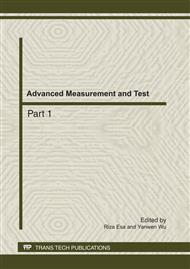p.695
p.701
p.707
p.713
p.719
p.724
p.731
p.737
p.742
Processing of Sonar Image Based on Compressive Sensing
Abstract:
The particularity of the underwater acoustic channel has put forward a higher request for collection and efficient transmission of the underwater image. In this paper, based on the characteristics of sonar image, wavelet transform is used to sparse decompose the image, and selecting Gaussian random matrix as the observation matrix and using the orthogonal matching pursuit (OMP) algorithm to reconstruct the image. The experimental result shows that the quality of the reconstruction image and PSNR have gained great ascension compared to the traditional compression and processing of image based on the wavelet transform while they have the same measurement numbers in the coding portion. It provides a convenient for the sonar image’s underwater transmission.
Info:
Periodical:
Pages:
719-723
Citation:
Online since:
July 2011
Authors:
Price:
Сopyright:
© 2011 Trans Tech Publications Ltd. All Rights Reserved
Share:
Citation:


